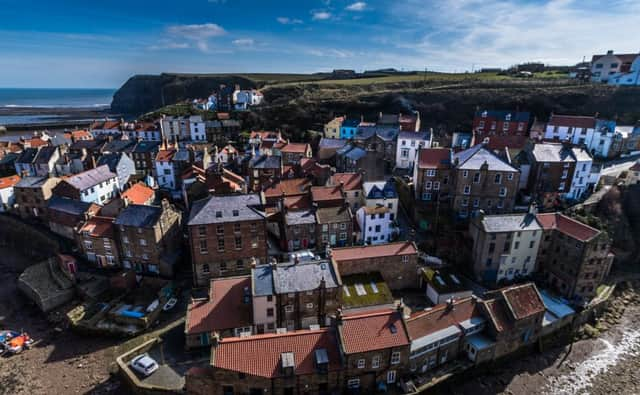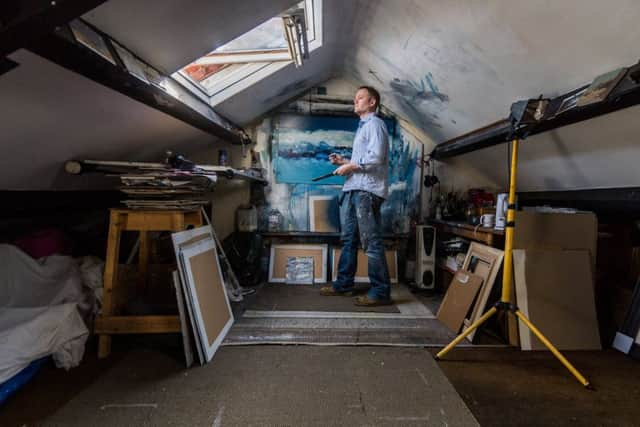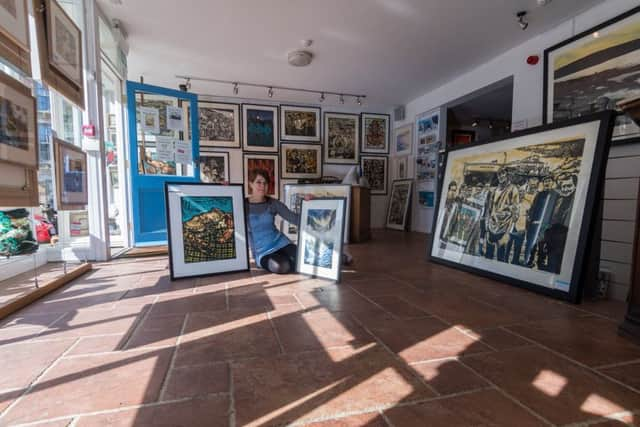How a Scottish village helped Staithes turn tourism into an art


For a community as far off the beaten track, with only scant signposting and just a single road in and out, the little fishing stop at the head of the North York Moors National Park, perched midway between Whitby and Saltburn, has a profile that punches above its weight.
It hosts a weekend-long arts festival each September and for the rest of the year, creativity flows on to the cobbled streets from the lofts and garrets of resident and visiting artists who mostly want to capture what they see. Some two dozen art and crafts people are full-time residents.
Advertisement
Hide AdAdvertisement
Hide AdAllison Milnes, who with husband David owns the Staithes Gallery on the High Street in the bottom half of the village, says it’s the art, as well as the sea and the scenery, that has defined it as a tourist destination.


She bought the gallery in 2000 and set about renovating it, a process, she says, that saw it “haemorrhaging money”.
It opened in 2006, but it was what was going on in another village, Pittenweem on the Firth of Forth north of Edinburgh, that was to provide the spark for the festival.
“We looked at it and said, ‘We could do this’,” she says. “The festival began in 2012 and this year’s will be our seventh.”
Advertisement
Hide AdAdvertisement
Hide AdIt is run on the lines of Edinburgh’s other institution, the Fringe festival, in which every available space is given over to exhibition.


“There are about 130 artists exhibiting in 90 to 100 properties, and at a conservative estimate 7,000 visitors over the weekend coming into the village,” says Rob Shaw, who has exhibited at the Royal Academy and is one of Staithes’ resident artists.
He used to run a design practice with TK Maxx and M&S as clients, but, he says, “resigned on the spot” when Mrs Milnes phoned him to say that £5,000 of his art had sold in a single hour at her gallery.
“For the first year I had to sit in the pub and twist people’s arms to let us use their holiday cottages,” he says. “What’s happening now is that people are booking cottages early specifically to use as exhibition spaces for the weekend.”
Advertisement
Hide AdAdvertisement
Hide AdThe tourist mini-boom that art has brought to Staithes could be seen as a case of history repeating itself.


In the late 19th century, the place was home to two dozen painters who took their inspiration from the impressionists Monet, Cézanne and Renoir, and called themselves the Staithes Group. The most famous collaborator was Dame Laura Knight, who kept a studio in the village and lodged at one time above Mrs Milnes’s gallery.
That wasn’t the only surprise she discovered when she and her builders dug into its history.
“When the cellar was renovated, the builders found a false wall at the back of the house that goes right underneath it,” says Mrs Milnes. “Under the house next door, they found a bricked-up wall from the days when all the cellars on the street were linked together and smugglers could carry contraband all the way from the harbour to the beck without ever coming above ground.”
Advertisement
Hide AdAdvertisement
Hide AdThe revenue withheld from the taxman in this way is said to have paid for Staithes’ unusually fancy Georgian high street.


“They would smuggle silks, brandy, tea, Dutch wheat gin – anything that was highly taxed,” says Paul Johnston, an expert on the underground world of the east coast, who runs tours and walks at Robin Hood’s Bay, south of Whitby.
“When it was landed, there would have been a network of handlers who conveyed it from the ships, hiding it away and then transferring it in small barrels on to pack ponies who would be taken over the moors and into the rest of Yorkshire.
“But some of the goods were left in the villages around the coast as payment in kind.”
The practice petered out around 1900, with the formation of the coastguard and the relaxation of taxes.